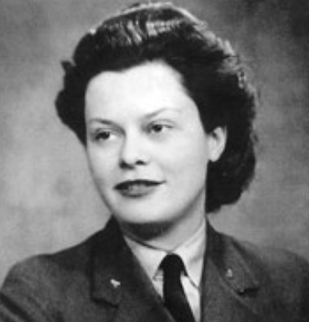In October of 2017 one of the most decorated of Great Britain’s Special Operations Executive agents and survivor of Ravensbrück concentration camp, Yvonne Burney passed away at the age of ninety-five.
For her daring and dangerous work in World War II she was awarded the Croix de Guerre, a French award for bravery; was made an MBE, Dame Commander of the Most Excellent twenty-two Queen for outstanding public service and was made chevalier of the Légion d’Honneur, the French National Order of the Legion of Honour, the highest order of merit in France.
Born in Paris in 1922 of a British engineer father and French mother she and her family lived in six different European countries where her father was assigned to engineering jobs. At the onset of World War II, the family returned to England. She joined the Women’s Auxiliary Air Force in 1941 working as a clerk. She was promoted to Section Officer in the Royal Air Force and assigned the duties of interrogating prisoners of war.
Yvonne soon came to the attention of the Special Operations Executive secret organization organized by Prime Minister Winston Churchill in 1943 and became one of thirty-nine female agents sent into France to work for the Resistance at the age of twenty two.
Her first assignment took her into France by train with forged identity papers. Speaking of the trip, she recalled in an interview in 2000, “There was always the possibility that one would give oneself away. There were identity checks on the train, but I had my papers in order. It was difficult to relax or even fall asleep. It seemed to be a very long journey.”
When she arrived in the French town of Dole, she met her contact, Gonzagues de Saint-Geniès – code name “Lucien” and was assigned her codename – “Odette”. Lucian and Odette arranged night drops of arms and ammunition into Nazi occupied France. After the success of Operation Overlord, the Allied invasion at Normandy in 1944, they organized Operation Cadillac, an enormous daytime parachute drop of three thousand seven hundred containers of weapons, ammunition, and supplies for the Resistance carried out using over three hundred United States Air Corps B17s and five hundred United States Air Corps fighter planes to the Vercors massif in the Rhône Alpes region of occupied France. Yvonne orchestrated the operation by radio contact with over thirty Allied aircraft.

After the operation was finished, Yvonne and her fellow Resistance fighters returned to their safe house, a cheese plant in Dole. As they were preparing for lunch one of the men shouted, “The Germans!” and everyone hid among the stacks of cheese wheels. When they found nothing, the Germans left the building and assigned a single guard to watch the property. One of the Resistance fighters accidentally made a noise and the Germans rushed back and started shooting at the walls and ceiling. When Lucien’s blood dripped through the cracks down onto the Germans they began an intensive search of the building eventually finding the entire group. According to Yvonne, “We were all found, one by one. I was one of the first. We were thrown on the ground then taken by lorry to Dijon and put into individual cells. I was interrogated, beaten up, then dragged up the stairs past an office full of people in uniforms typing reports. I had a sense of being someone else. The only thing that kept us going was the thought that the job we’d done the day before had been a success.”
Unable to definitively prove Yvonne was a French agent because of her guise of being a typist and her ability to speak English without a French accent, the Nazis sent her to Ravensbrück concentration camp for women in Germany where she was reunited with other women from the SOE. During her imprisonment, twelve of her fellow SOE agents were either shot or gassed to death. Yvonne had contracted tuberculosis while at the camp and was released by a deal concocted by the French Red Cross to which the Germans agreed. Her fellow prisoner and nurse, Mary Lindell, an outspoken and determined member of MI9, The British Directorate of Military Intelligence, assisted Yvonne onto the last transport out of Ravensbrück in April of 1945. Before leaving, Mary was present when the Red Cross asked the Germans if there were any more SOE agents in the camp. When the Nazis claimed there were not, Mary pulled a list of inmates from her pocket. Mary, who served in both World Wars as a spy and resistance fighter had been shot, arrested, imprisoned, tortured and was sentenced to death several times but survived the war going on to live until the age of ninety one when she died a French Countess.
Back in London, it took Yvonne almost a year to physically recover from her ordeal in the German camp. Afterward, she spent the next twenty years working with her husband, Desmond Bailey, in the Colonial Service in waht was then Rhodesia, now Zimbabwe. After Bailey’s death, she married Anthony Burney and relocated to Portugal. After Burney’s death, she came home to London in 1999 and lived quietly, occasionally giving interviews.
